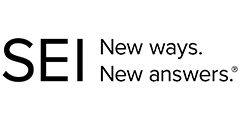Do you really understand your clients’ behaviours and preferences? Do you devote enough time to reviewing your MI and more importantly do you act upon it? Can we learn from other industries?
- The idea for today’s session is to give you food for thought as to how other industries can help guide the wealth management industry in how they think about and use data. The operating framework that we are proposing being Date/Insight/Action.
- Having gone through the deck and looked at the various ways that firms such as City Mapper, Cambridge Analytica, Twitter and others have used and continue to use data, I’d like to now challenge the room as to how the Wealth Management industry can use data to their advantage? How does your firm use data?
- The room agreed that they are struggling to make use of the masses of data that they have. There is a concern that the data they carry is not up to date and how can they use the volume they have.
- It was also agreed that data perhaps need to be reverse engineered – we need to ask the right question, or set the objective/outcome they want to achieve and then use the data they have to support them in achieving that. The right question can help influence how we look at data.
- Data is not necessarily a problem of not having it, it’s more not being aware of what to do with it. How can you easily identify the value within the data?
- One delegate raised concerns about the ‘creepy factor’ – you know too much about me and that may put clients off. There is also a need for information to be reliable – where did data come from and how reliable is the source.
- A lack of human elements in the provision of service and advice is always a concern. The really ‘creepy factor’ comes in when there is a mixture of both human and computer knowledge. People seem to be most comfortable when it is wholly one or the other.
- As wealth managers, with lots of customer data, how can you understand your client behaviours better?
- For us it is more about using data to better identify cross selling opportunities. The first challenge is cleaning the data to ensure it is effective and accurate, from there the data is more powerful.
- Live monitoring of data is important. KYC for example is something that is always changing, and qualifying client risk is a critical business factor.
- The challenge is getting relationship managers to download data and intel from their own minds and onto a system. This will only help the cross-selling example mentioned before.
- For me I am most interested in understanding client reactions – take for example the Neil Woodford news; which clients are calling up, who is not bothered, who is unaware, who reads more about it and who needs us to call them. Such information would be dynamite to have and would transform our business.
- There is a fine balance to strike around knowledge of clients but also respecting their privacy.
- There is concern in the room that a huge trend might be missed due to WM being behind the data curve. At the same time, their businesses are successful and see the whole data, GDPR, suitability melting pot as quite a unique instance. The room recognises there is much more to come here.
Expert: Johann Koch, SEI



